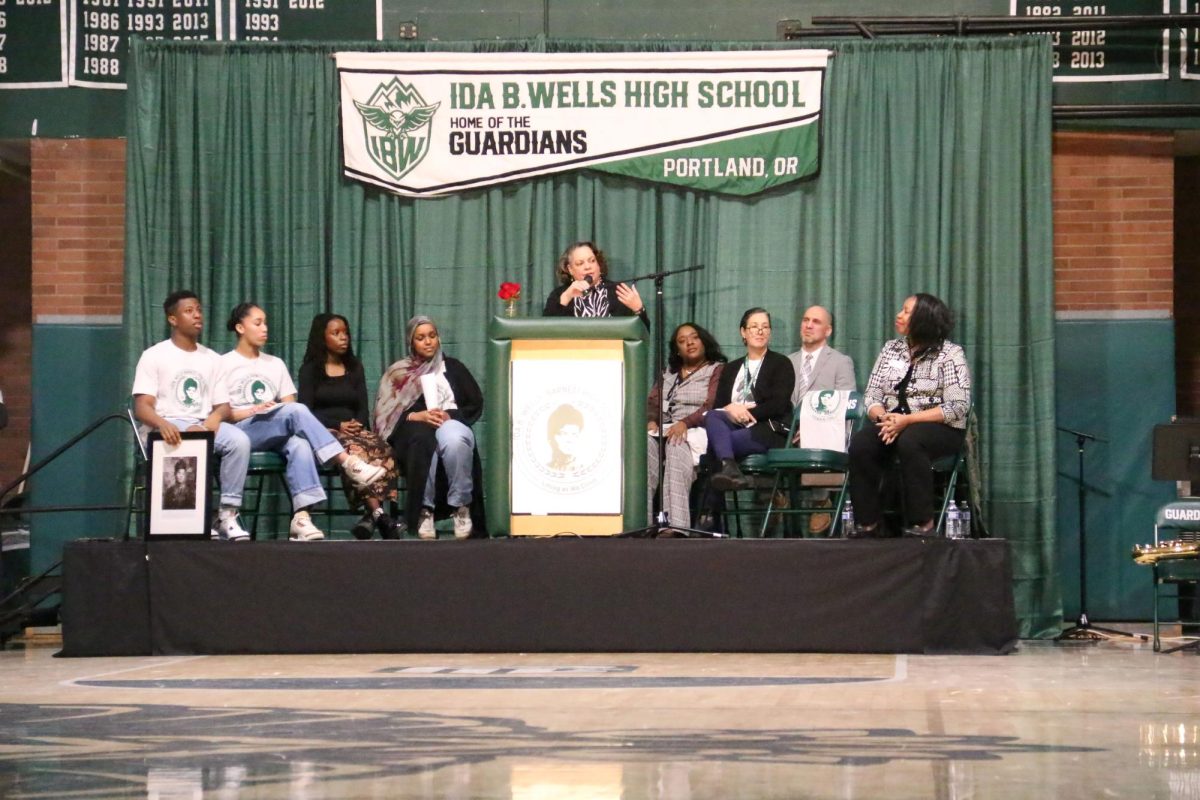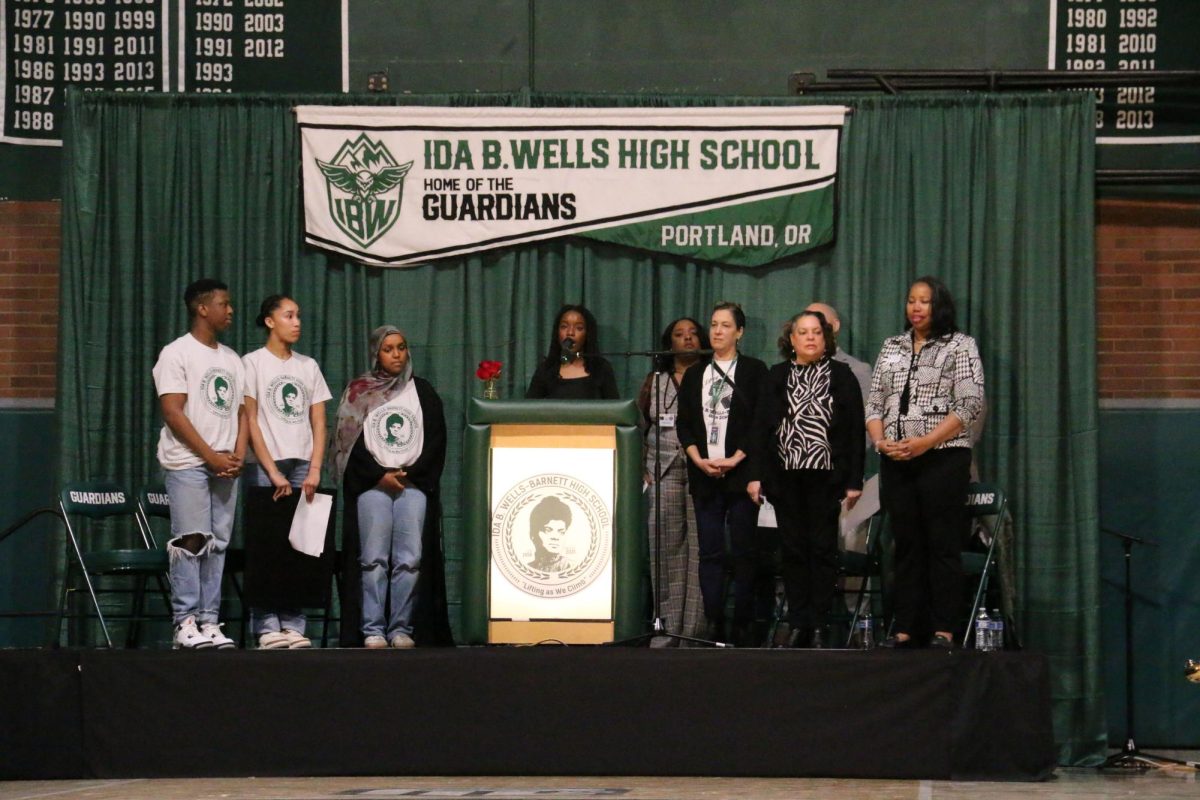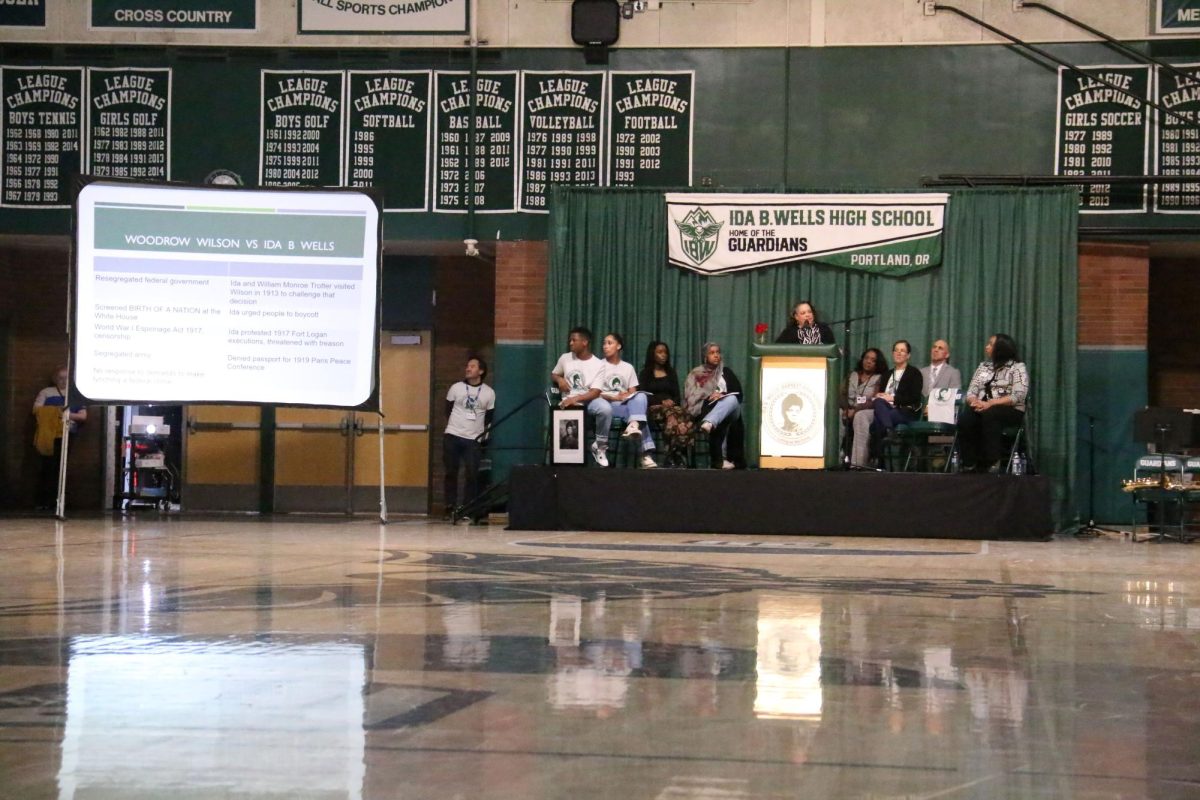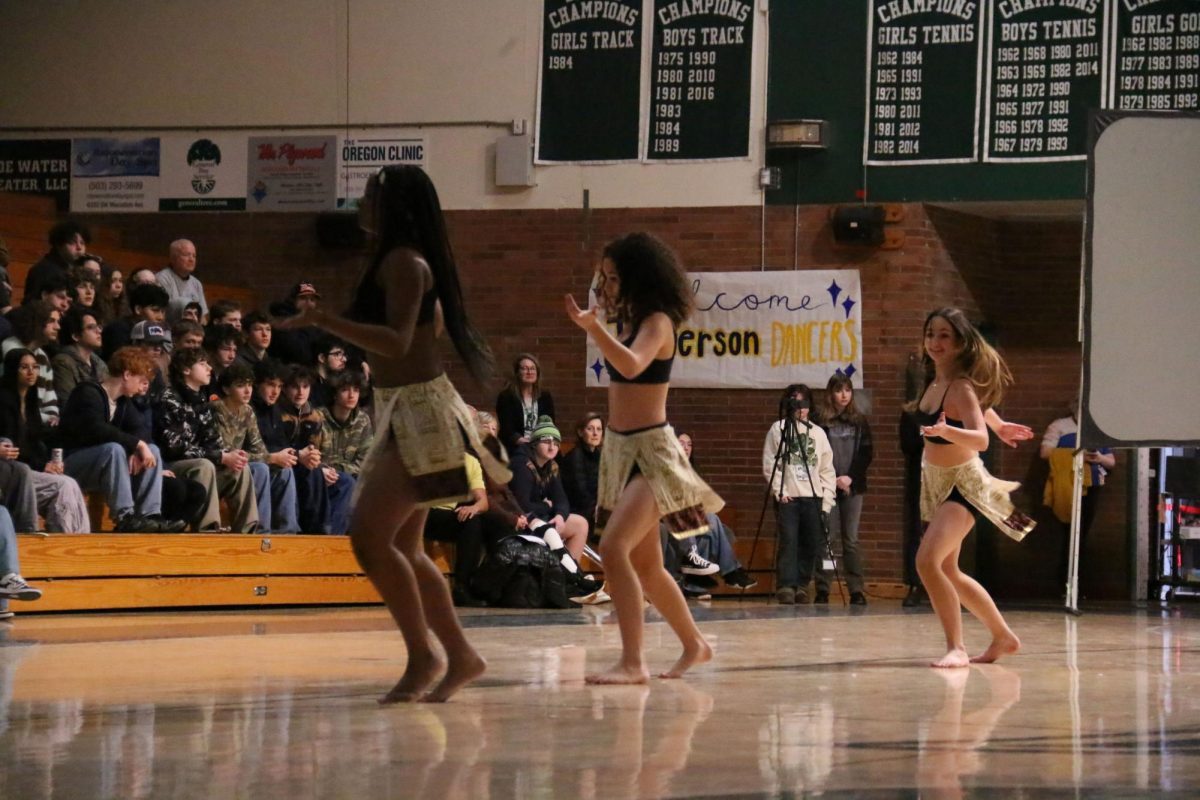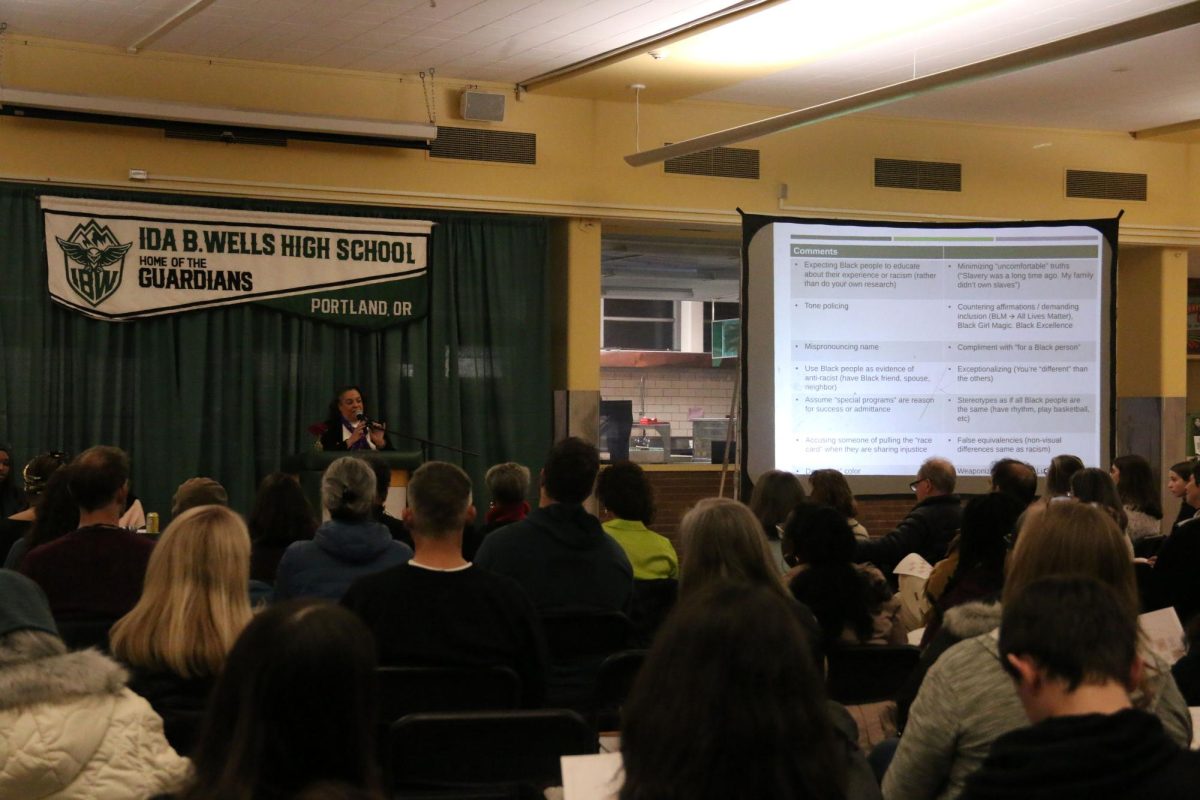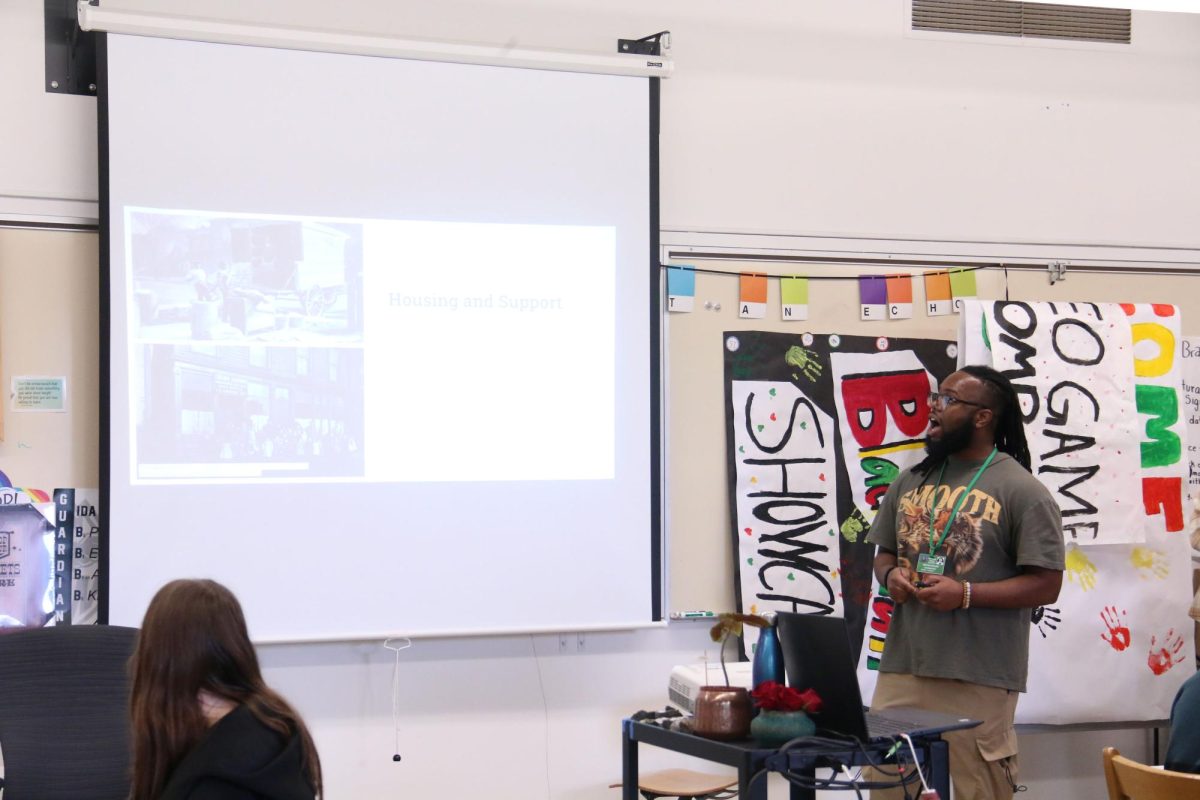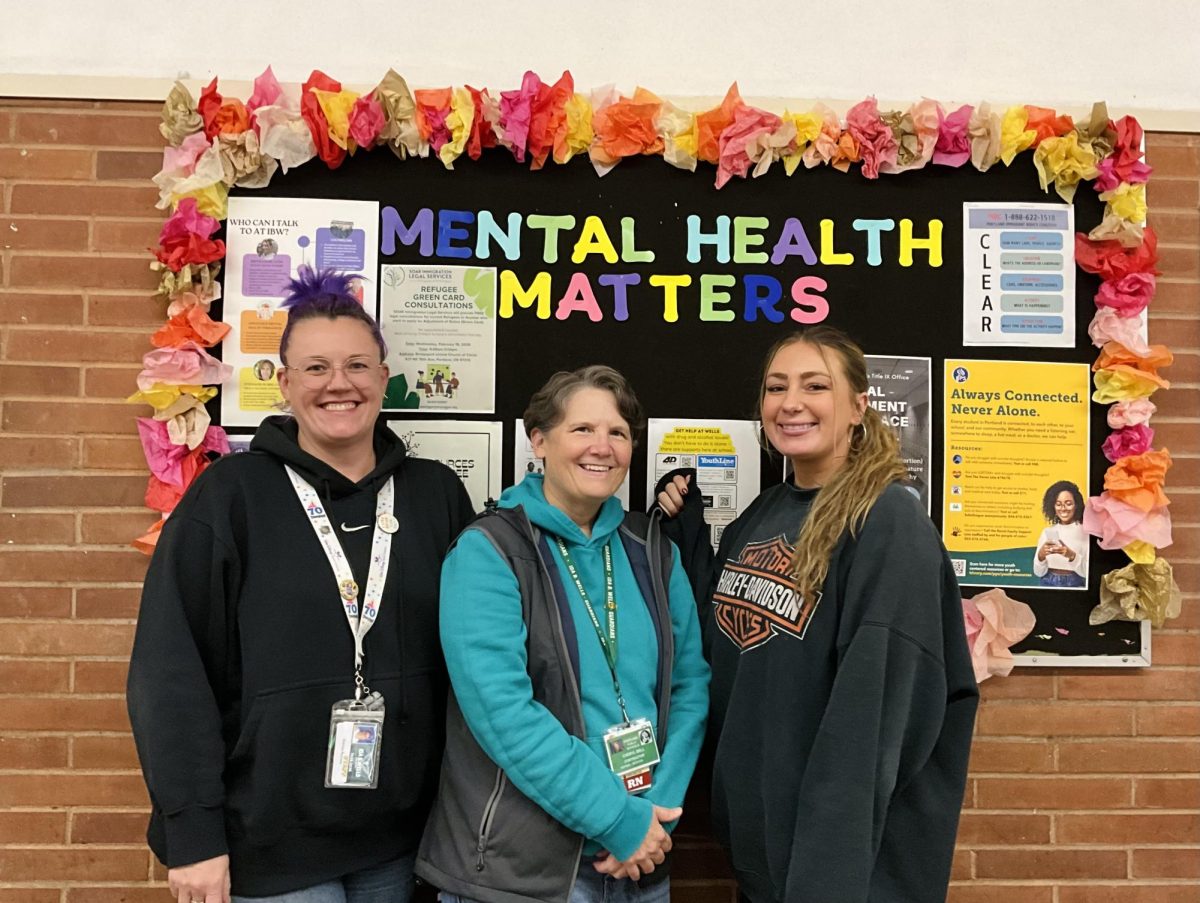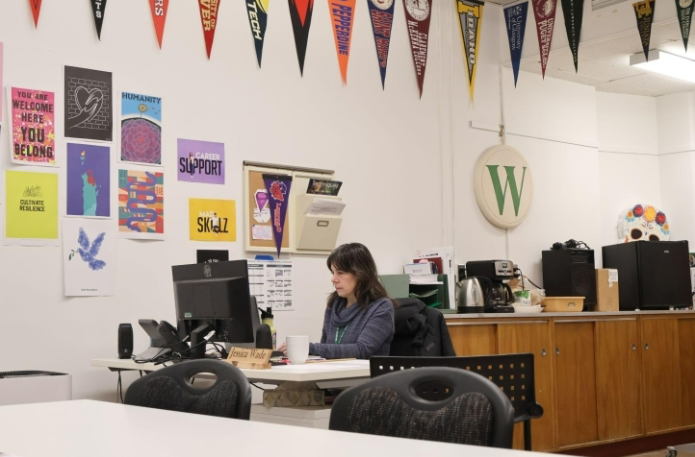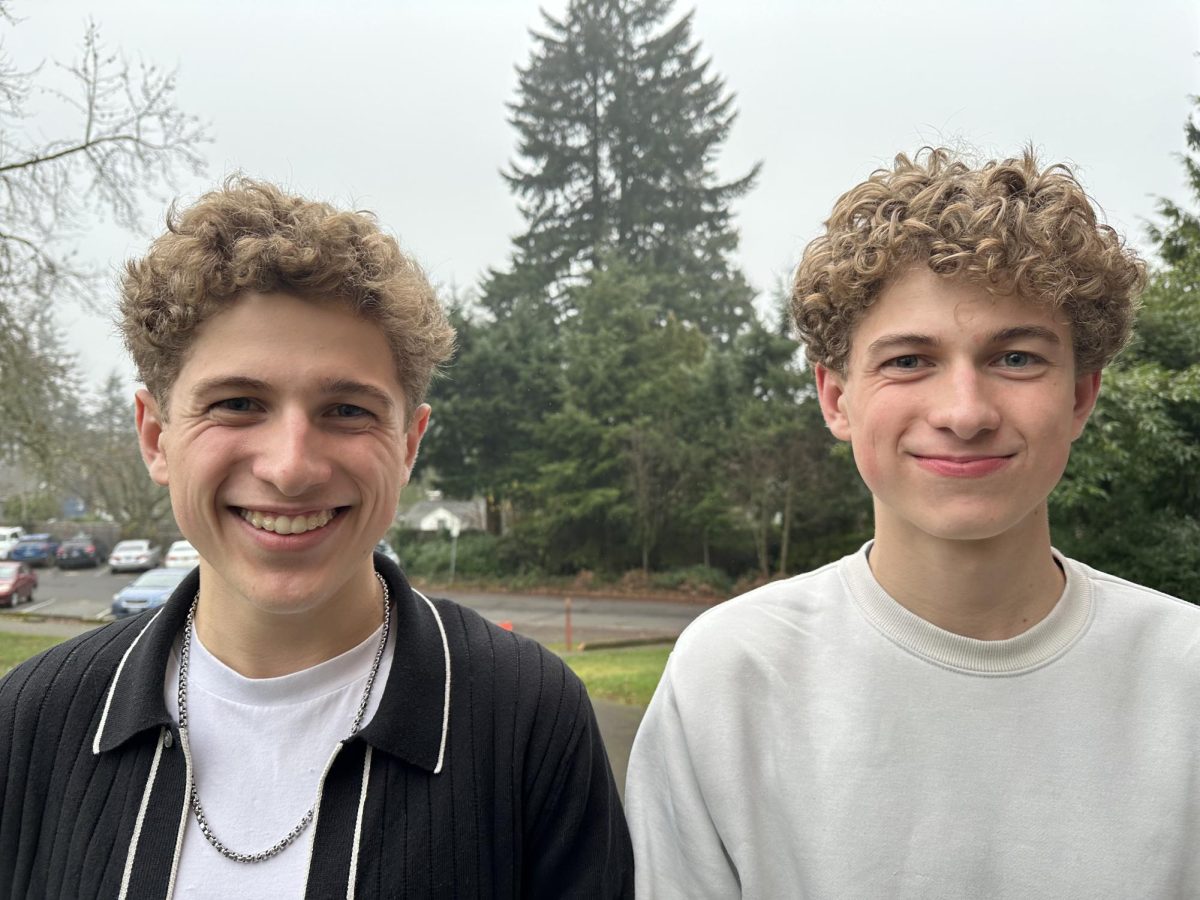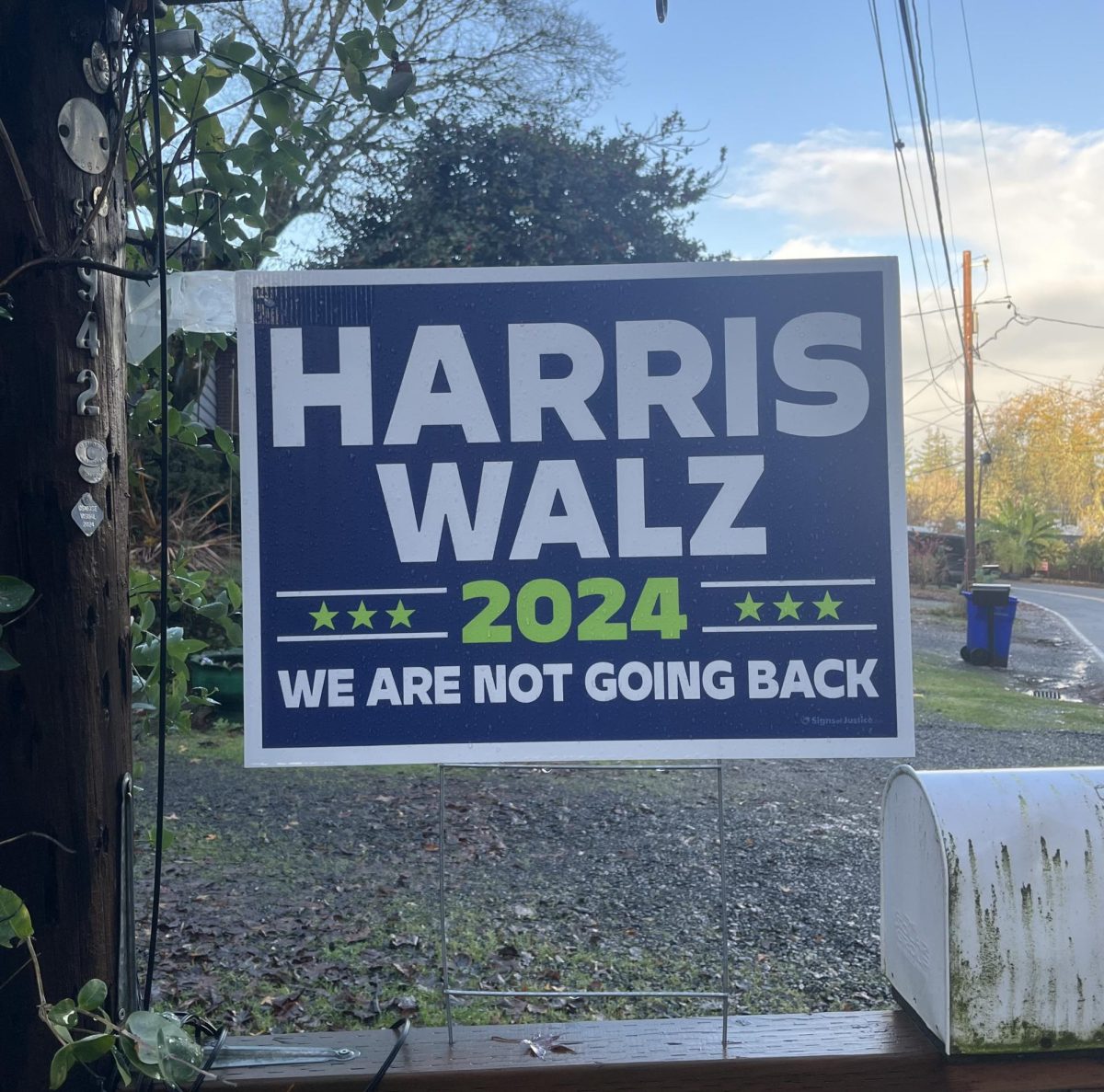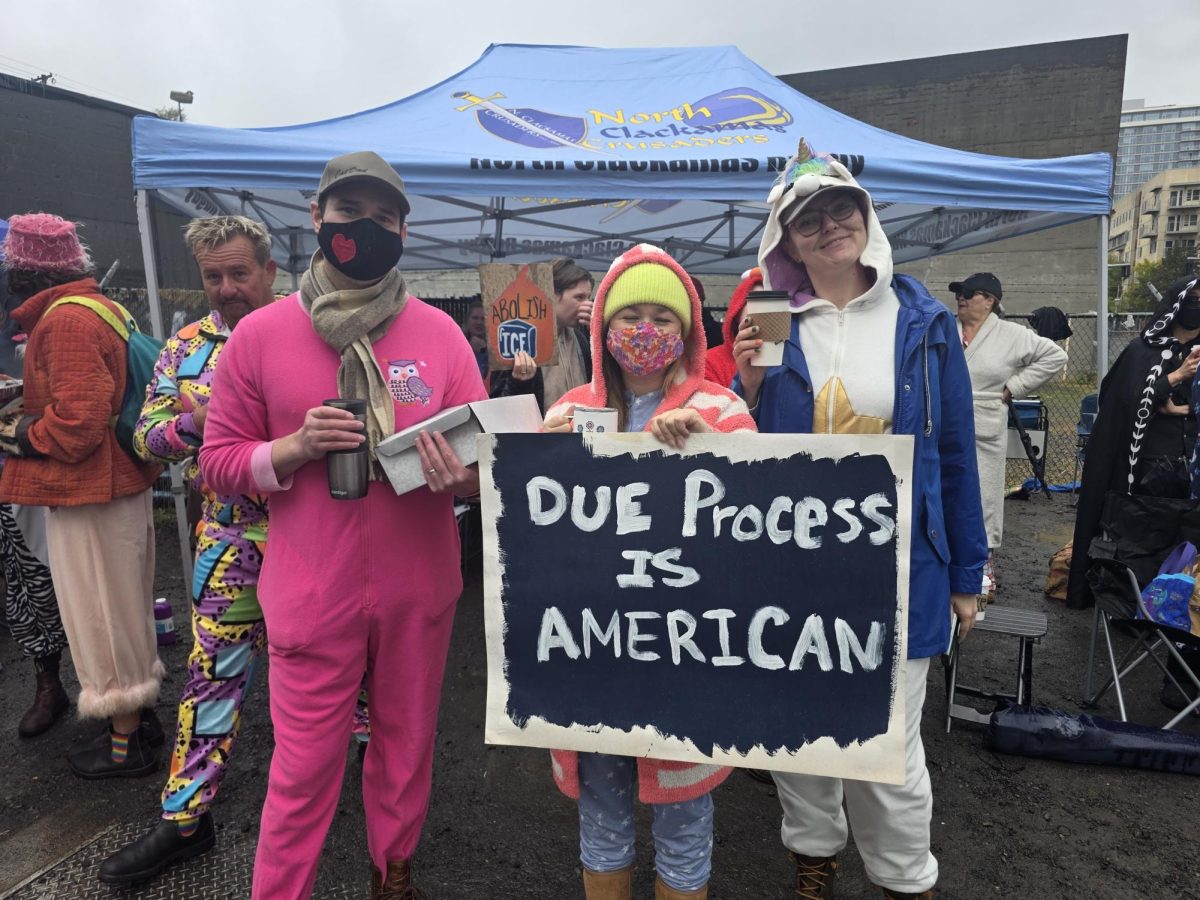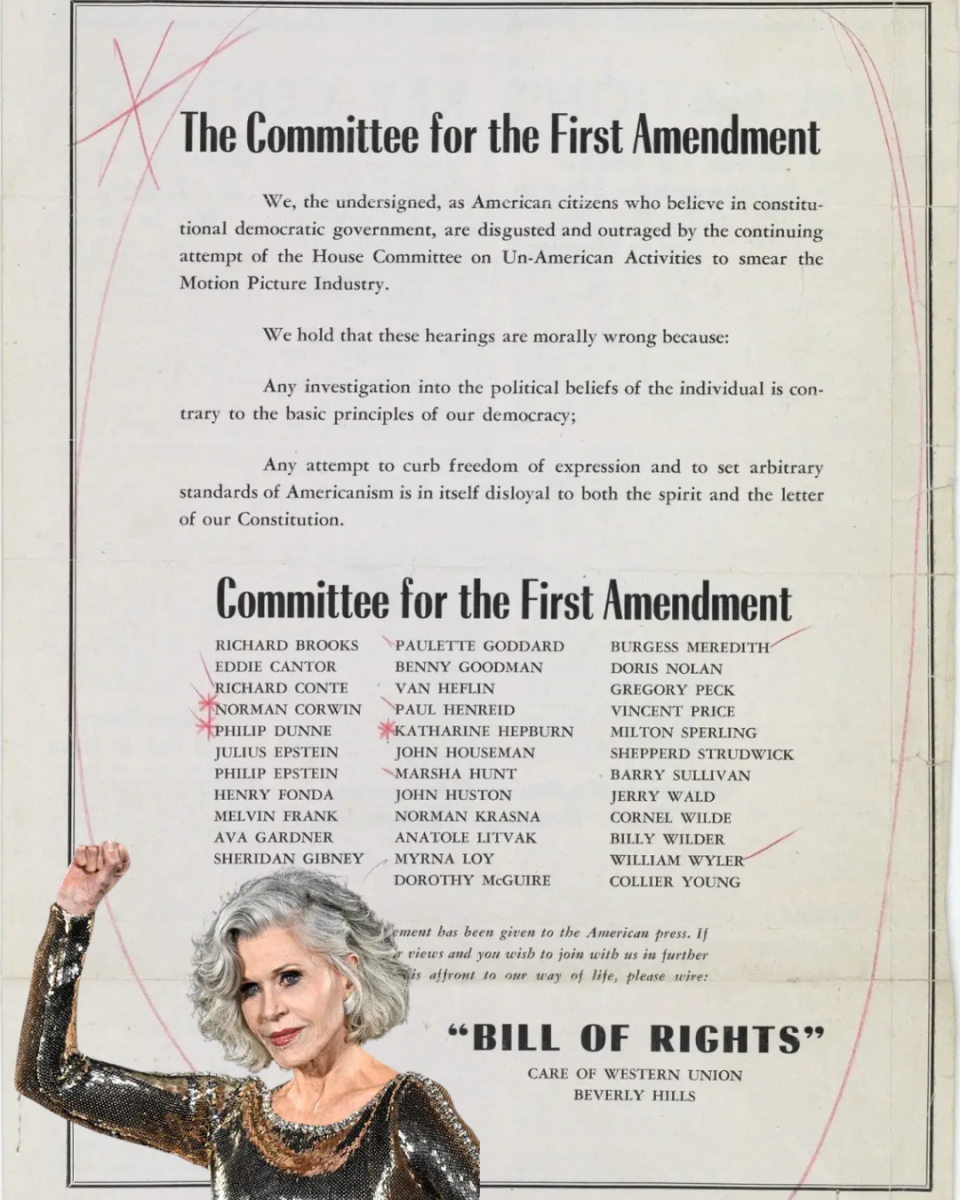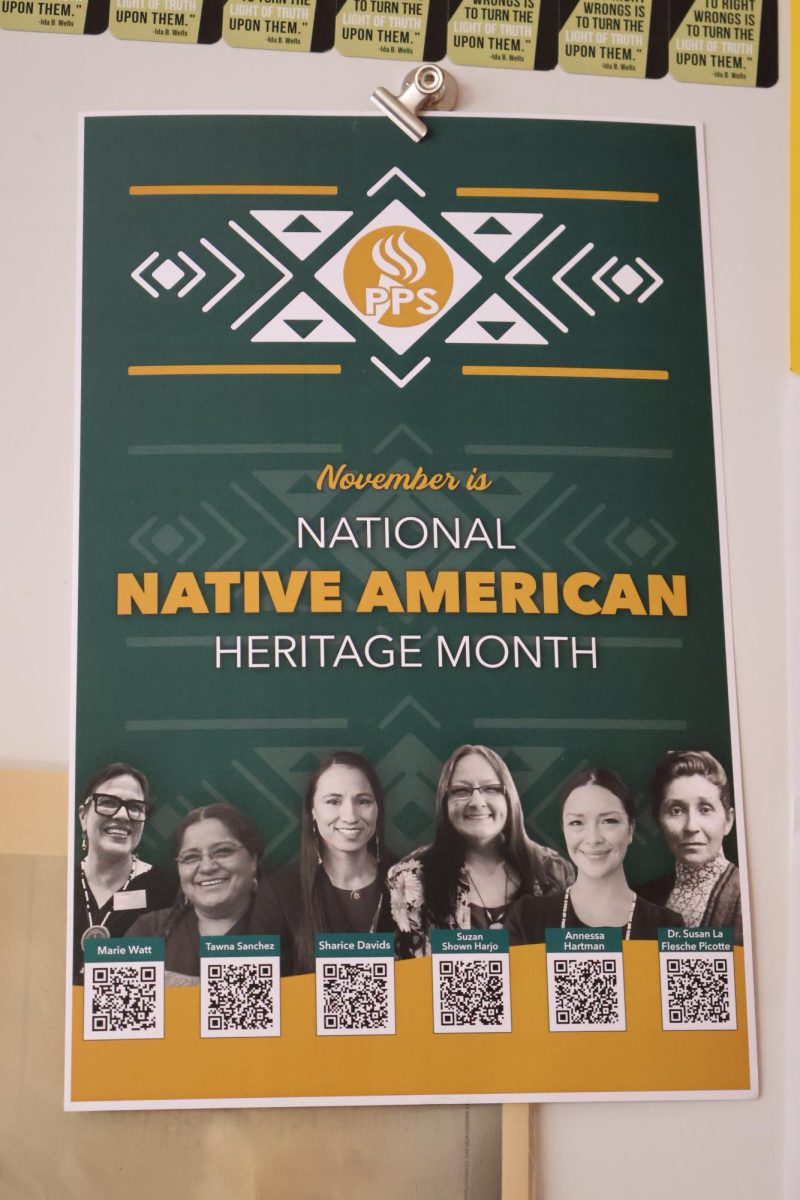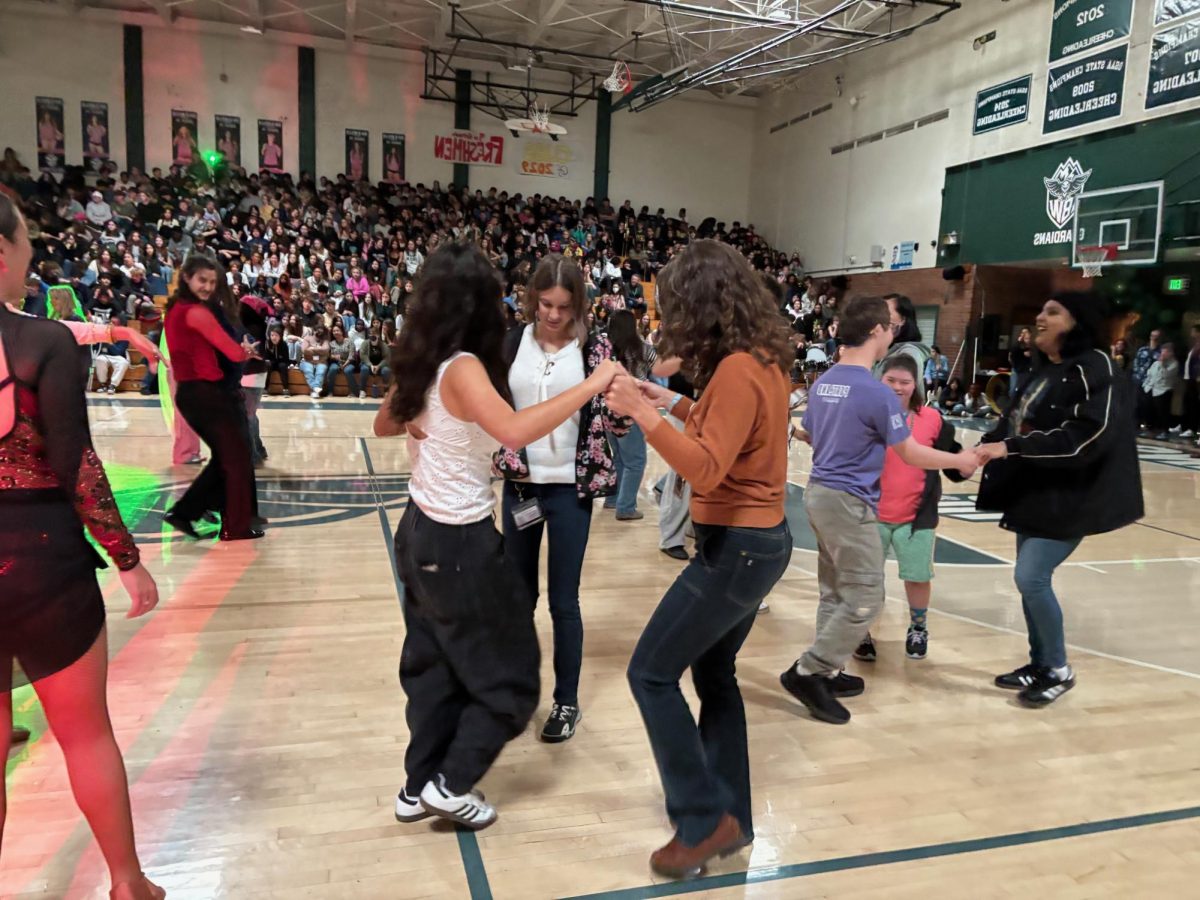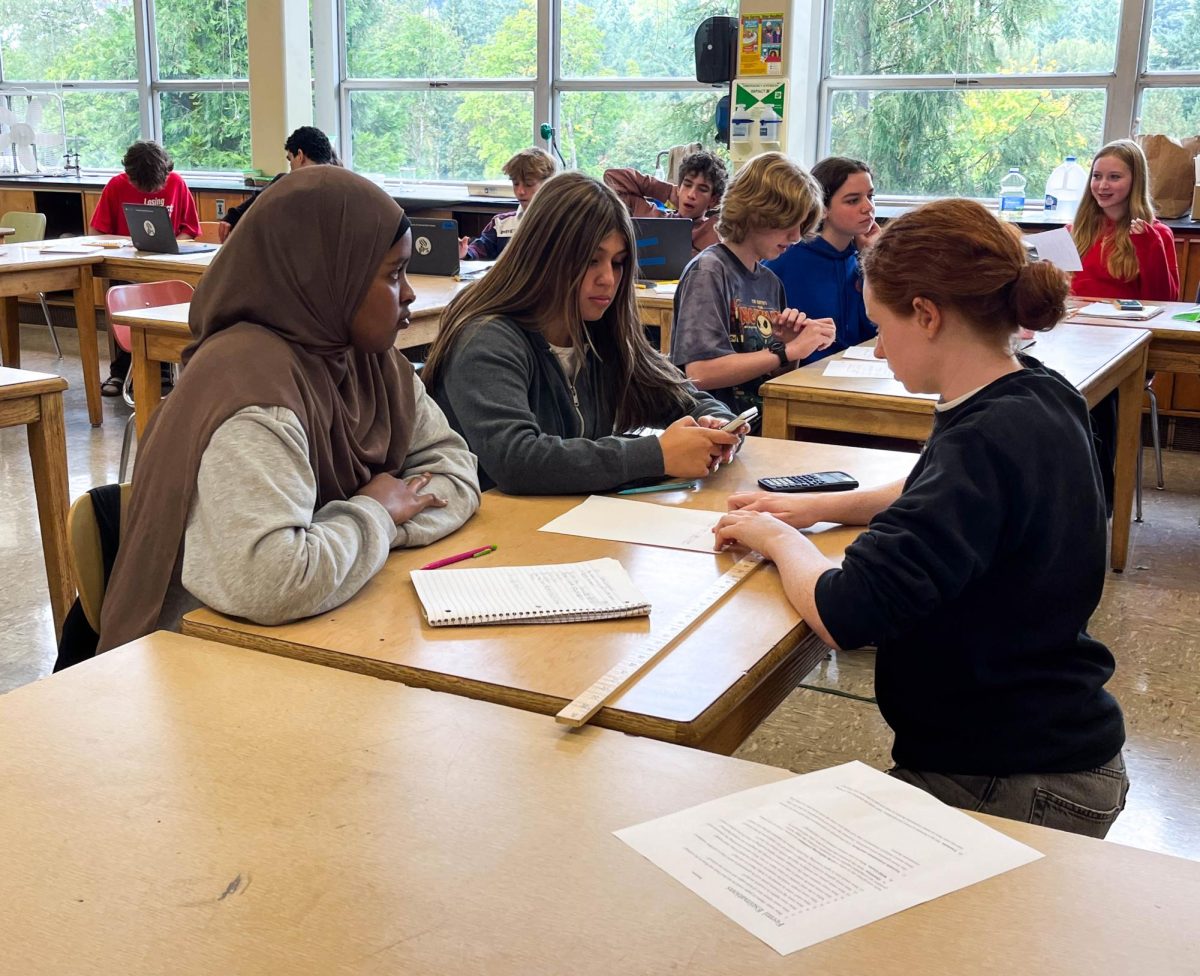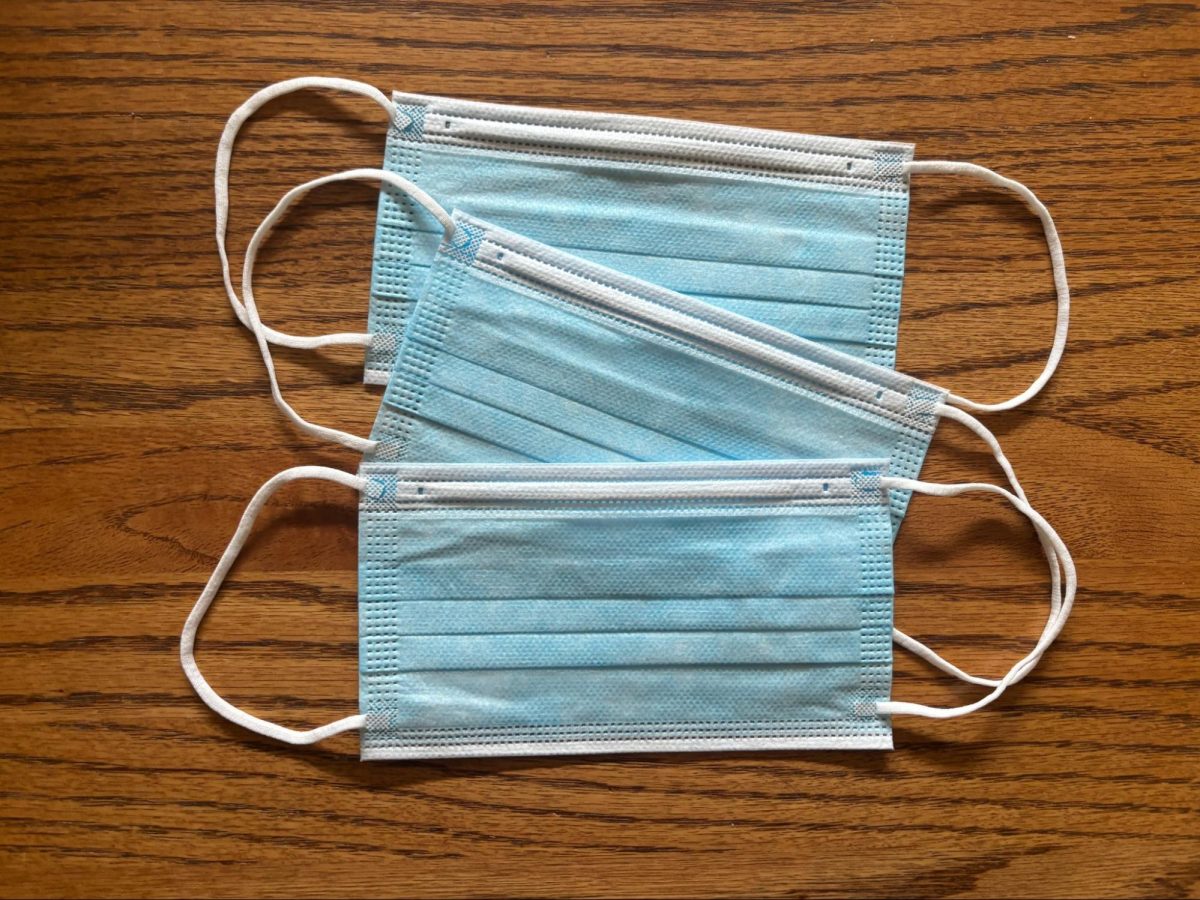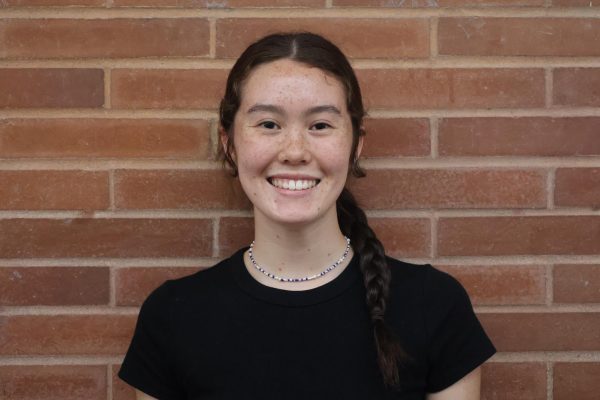“Don’t be embarrassed that you do not know something you were never taught. Be proud that you are now willing to learn,” said Michelle Duster during her visit to IBW.
This was the beginning of a “historic” moment, as described by Ida B. Wells High School’s principal, Aeysha Coning. Duster, a historian, author, activist and the great-granddaughter of Ida B. Wells began her visit at IBW with this opening at the Black History Month assembly on Feb. 20. Other special guests in attendance were Portland Public Schools (PPS) superintendent, Dr. Kimberlee Armstrong, PPS’s Vice-Chair Michelle DePass and IBW’s former principal and PPS’s Senior Director of High School Core Academics, Filip Hristić.
But first, Duster and students were welcomed at the assembly with a performance from Davina Scott, an IBW junior and Black Student Union (BSU) member, of the Black National Anthem. The Jefferson Dancers followed Scott with a performance of a hip-hop piece choreographed by TJ Yale, a Jefferson Dancer alum.
Then came Duster’s speech to IBW students, faculty, and community members. At the assembly, Duster contrasted Ida B. Wells and her contemporary, Woodrow Wilson, the school’s former namesake. “When my family was first contacted by the former principal, Hristić, about the name change, we [sic] almost fell out of our chair,” said Duster. “You can’t get any more drastic differences between two people.”
“Hopefully, you all feel that what Ida [B. Wells] represents, is what you represent versus what Wilson represented,” said Duster.
Duster discussed the encounters and connections between Ida B. Wells and Woodrow Wilson throughout their lives. She highlighted many moments of Ida B. Wells’ activism and protest, all of which coincided with Wilson’s racist and discriminatory actions and policies.
Along with contrasting Woodrow Wilson and Ida B. Wells, for instance, Ida B. Wells and Willman Monrow Trotter visited Woodrow Wilson to challenge his decision to resegregate the federal government, Duster featured these moments of Ida B. Wells’ life:
- On March 3, 1913, Ida B. Wells marched at the front of the Illinois delegation of the women’s suffrage march in Washington D.C. after being told to go to the back of the parade to not insult the southern white women participating. In efforts to pressure Woodrow Wilson to pass legislature for women’s suffrage, the parade occurred the day before his inauguration.
- In response to the Federal Bureau of Investigation arresting Ida B. Wells for treason under the Espionage Act of 1917, a law supported by Woodrow Wilson, she said, “I’d rather go down in history as one lone Negro who dared to tell the government that it had done a dastardly thing that to save my asking by taking back what I have said.” She was charged with treason for making buttons with the words, “In Memoriam Martyred Negro Soldiers Dec. 11, 1917,” in honor of Black soldiers who had been executed after being arrested for a clash between white soldiers and them at Fort Logan in Texas.
- Ida B. Wells wrote a letter to Woodrow Wilson sharing her opposition to him segregating the military. She drew parallels to African-American soldiers fighting for freedom and democracy overseas, while in the U.S., they did not have the same liberties.
The entirety of her speech can be viewed here.
“I hope that you all feel that it is a huge, huge thing for your school to change the name from Woodrow Wilson to Ida B. Wells because they stood for different things; I feel diametrically opposed things,” said Duster. “I hope it gives you some perspective of why my family feels incredibly honored that here in Portland you all feel that what my great-grandmother represented and what she worked for is what you want to represent you and what you all represent out in the world.”
The Jefferson Dancers followed Duster’s speech with a second performance, a contemporary piece inspired by African storytelling, choreographed by Bunky Holden-Williams, the Artistic Director of the Jefferson Dancers II and a Jefferson Dancer alum. To end the assembly, BSU presidents Jizelle Long, Sebastien Porter and Saaleha Mohamed presented Duster with a replica of an Ida B. Wells quarter, a gesture to her being included in the new American Women Quarters collection by the U.S. Mint. The quarter was made by Steve Walmer, the IBW Woods and Metals teacher, and his students.
Throughout the remainder of the school day, there were several smaller events with Duster. BSU members spent their lunch together with Duster and during seventh period Duster held a space for discussions with female students of the African diaspora.
On the evening of Feb. 20, a community event was held in the cafeteria with an IBW student panel and Duster. Duster first spoke to the audience about microaggressions and allyship. Then, with Coning as moderator, the audience submitted questions for either Duster or the student panel to answer. Conversations ranged from students sharing their thoughts on the renaming of IBW, qualities of Ida B. Wells they hope to carry forward in their lives, what they have learned at IBW about navigating the world as people of color, to Duster discussing the life of Ida B. Wells’ husband, Ferdinand Lee Barnett, and their relationship.
“All week we’ve been learning about Ida B. Wells, especially with Michelle Duster’s visit, and truly that word [audacious] has just screamed to me that that really resembles who she is and I hope to also carry that throughout my life,” said Jade Moratta, a senior and Associated Student Body (ASB), or student government, president. “[I hope] to try and be audacious with the things I do [and] try [to] inspire others to be audacious because that is what she truly did.”
Later, regarding the name change of IBW, Jago Parkinson, an IBW senior and BSU member, said, “I think the name Ida B. Wells in the school [sic] is a sign of progress and change. I also think that saying I can come from a school, Ida B. Wells High School, instead of [saying] I come from Woodrow Wilson High School, [is] something I can actually say without shame.”
The following day, Feb. 21, Duster spent the afternoon with Bora Architecture & Interiors and leadership students to discuss and plan how to incorporate Ida B. Wells’ spirit and values in the design of the future IBW building.
Bora architects and designers and Duster first met with the Design Club, a group of students who work with Bora to provide student input and feedback on designs of the future IBW building. Then Bora and Duster met with the advanced leadership and ASB classes.
Throughout the afternoon, these groups discussed the traits, values, legacies and strategies of Ida B. Wells. After discussion and reflection, students made prints with foam sheets, aiming to visually represent Ida B. Wells’ values and traits that resonated with them. Bora plans to utilize these prints in the design process of the future IBW building.
Duster’s visit to IBW will be remembered for years to come. As IBW students, we have been touched by the legacy of Ida B. Wells — and now Duster. As her visit came to an end, Duster left us with four pieces of advice to continue the work and legacy of her great-grandmother:
- Read as much good, in-depth journalism work as possible and really study the writing techniques.
- Use as many primary sources as possible in your research.
- Gather as many details as possible about the subject of the story.
- Stick with indisputable facts.


